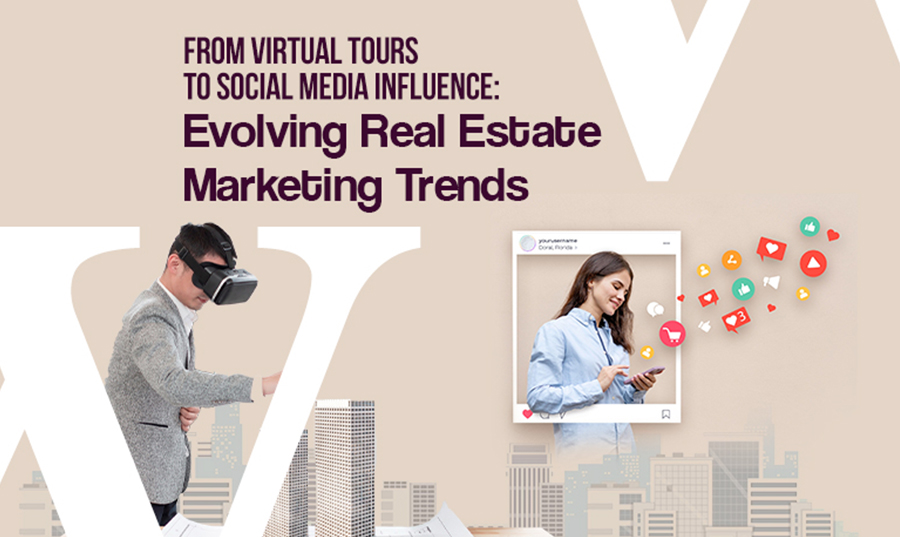Real estate marketing has evolved significantly in recent years, driven by advancements in technology and changes in consumer behavior. From virtual tours to social media influence, here are some key trends that have shaped the industry:
- Virtual Tours and 360-Degree Videos: Virtual tours and 360-degree videos have become essential tools for showcasing properties. These immersive experiences allow potential buyers to explore homes and properties from the comfort of their own homes, saving time and narrowing down their options before scheduling physical visits.
- Augmented Reality (AR) and Virtual Reality (VR): AR and VR technologies are being used to create interactive and engaging property experiences. AR apps can provide additional information about properties when users point their smartphones at a building, while VR can offer virtual property walkthroughs, making it easier for buyers to visualize themselves in a space.
- Drones for Aerial Photography: Drones are increasingly used to capture stunning aerial shots and videos of properties, providing unique perspectives and highlighting the property's surroundings. This technology can be especially beneficial for showcasing large estates, waterfront properties, or homes in scenic locations.
- Real-Time Communication:The use of chatbots and real-time messaging on real estate websites and social media platforms has become common. Buyers and sellers can get immediate responses to their questions, making the process more efficient and convenient.
- Data-Driven Marketing: Real estate agents and agencies are leveraging data analytics to gain insights into buyer behavior and preferences. This data is used to target marketing efforts more effectively, ensuring that properties are presented to the right audience.
- Social Media Influence: Social media platforms have become indispensable for real estate marketing. Influencers and real estate professionals are using platforms like Instagram, Facebook, and YouTube to showcase properties, offer advice, and build their personal brands. User-generated content and testimonials also play a significant role in building trust.
- Video Marketing: Video content, including property tours, agent introductions, and neighborhood highlights, has become a cornerstone of real estate marketing. Live streaming, in particular, allows for real-time interactions with potential buyers and offers a more authentic experience.
- Content Marketing: Blogging and content creation around real estate topics have gained traction. Providing valuable information about the home buying/selling process, market trends, and local insights helps agents and agencies establish themselves as trusted authorities in the industry.
- Green and Sustainable Properties: As environmental consciousness grows, there's an increasing demand for eco-friendly and sustainable properties. Marketing efforts often focus on energy-efficient features, green building materials, and eco-conscious living.
- Personalization: Personalized marketing, driven by AI and machine learning algorithms, tailors property recommendations to individual buyer preferences. This approach increases the likelihood of finding the right property for each client.
- Blockchain and Smart Contracts: Blockchain technology is being explored for real estate transactions and contract management. Smart contracts can streamline and automate the buying and selling process, reducing paperwork and the potential for fraud.
- Remote Work Considerations: The rise of remote work has influenced real estate marketing, with an emphasis on properties that accommodate home offices and remote work setups. Listings often highlight dedicated workspaces and high-speed internet availability.
In summary, real estate marketing continues to evolve with technology and changing consumer expectations. Virtual experiences, data-driven strategies, social media influence, and sustainability are some of the key trends shaping the industry in recent years. Successful real estate professionals must adapt to these trends to remain competitive in the market.










